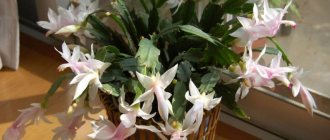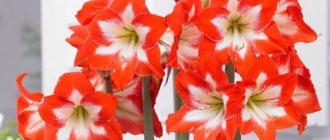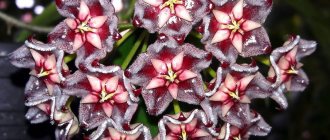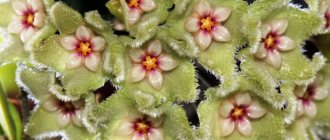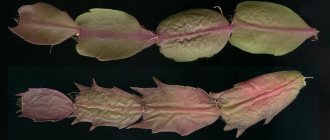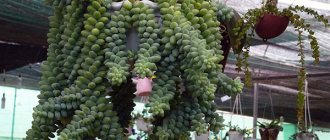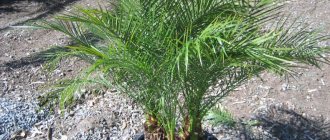Review author: Terrari School of Design
Decembrist belongs to the cactus family, but in appearance it looks more like an orchid; it has no needles, but many plates replacing leaves and stems. It is also called Schlumbergera, Zygocactus and Christmas tree because it dawns during the New Year.
Many flower growers do not know how to plant a Decembrist flower, so let’s look into this issue further. They usually buy a young plant in a pot. It is loved because of its simplified care and lush appearance during the flowering period.
Where does Decembrist grow and why is it associated with hummingbirds?
Decembrist grows naturally in South America, but mostly in Brazil. However, these species differ from the domestic Schlumbergera because they prefer epiphytic symbiosis with various plants of the tropical evergreen forest, they connect with their trunks or root systems.
If you look at the photo of Decembrist flowers, you can note their beautiful flowering, thanks to this, flower growers really like to keep the plant at home. Externally, it is worth noting characteristics similar to a shrub: many segmented leaf-shaped or triangular shoots based on a soft texture with a length of up to 0.5 m. During the flowering period, it is their upper part that is covered with flowers 5-8 cm in size and a multi-tiered corolla system similar to a star with protrusion of stamens.
The flowers have too long a tube, so pollination is possible only for tiny birds of the hummingbird family. For this work, they have at least 6-8 weeks until the buds fully open. After this, the beauty of the flowers lasts for 4-5 days, then they fade.
Interesting fact: Decembrist is often confused with Hatiora because they have similar flowers and are similar in DNA structure.
Difference between Schlumbergera (Decembrist) and Ripsalidopsis
Question: What is the difference between Decembrist and ripsalidopsis? Mine blooms with pink flowers in the spring (March, April).
Colleague: The flowers are different. Schlumbergeras have two tiers, as if from two flowers grown from each other. Rhipsalidopsis blooms with a simple flower
Vladimir: Correct, these are different types. It is incorrect to identify Schlumbergera (Decembrist) by its teeth or lack thereof, since there are two main varieties: buclea - without teeth - the leaf shape is very similar to ripsalidopsis and truncata - with teeth.
The difference between Schlumbergera buclea and Ripsalidops: if you look at the leaves, Ripsalidopsis should have pubescence, and Schlumbergera should have bare leaves. But, in general, it is necessary to determine, as a colleague correctly noted, only if there are flowers. Yes, even this will not always be possible with accuracy - there are too many hybrids among the orchid cacti on our window sills.
Therefore, the time of flowering for many of them is as God puts on their souls, their loved ones. By the way, there are also options with leaves similar to Schlumbergera boucleia, only very rare ones - hatiora or epiphyllum. Don't be surprised, even with such segments.
Decembrist special flower
All plants are different in some way, but Decembrist stands out for its flowering period. In December-January, most house plants rest, and it begins to please the eye. But it also stands out for other qualities:
- Does not like western or southern sides of the window sill. Too intense lighting can damage the terminal segments of shoots, which often causes death;
- In summer, he needs shade protection from exposure to direct rays of the sun;
- In summer, he needs a shower or regular spraying;
- If proper care is provided, then you can hope for New Year's flowers for 15-20 years.
- You should not move the plant to another place during the formation of buds. Even turning the pot can cause harm.
- Standard cultivation is allowed, but you can resort to hanging the plant.
How to plant Schlumbergera?
Decembrist is a fast-growing plant, so if there is a need to replant it in the spring, then at the same time you can plant a young cutting, and by next winter it will already delight you with a thick, overgrown crown, and maybe even flowering.
The process of transplantation and seating is standard:
- Prepare a pot of the required diameter. Drainage (1/3 of the pot) and some substrate are placed at the bottom.
- Carefully, shaking slightly, remove the zygocactus from the old container and, having separated the cuttings for planting, place the plant in a new pot. Fill the container with fresh soil, without compacting it too much.
- The separated cuttings are placed in a new pot in a similar way.
Decembrist varieties
Numerous varieties of Decembrist are able to impress with the different colors of flowers and the intricate shapes of inconspicuous petals: narrow, oval-like, terry, with pointed tips.
Every year gardeners experiment and get new versions:
- White Christmas. A hybrid species characterized by an increased duration of snow-white flowering. Thanks to this, the variety has gained worldwide fame.
- Kris Kringle. It is distinguished by the compactness of the crown of the bush with the miniature shape of very short shoots. It has a bright red color.
- Pasadena. It is distinguished by its effective form based on its pronounced red color. Has large leaves.
- Santa Cruz. It has expressive colors with a predominance of orange interspersed with a hint of red. During the growing season, the bush immediately acquires a rich, spectacular color, which is very popular among gardeners.
Description and types of flower
The birthplace of the Decembrist is South America. Zygocactus, as Decembrist is scientifically called, belongs to epiphytic plants, that is, growing on the roots, trunks or branches of trees, using them as support.
Decembrist is also called the Schlumberger flower; it is a forest cactus, although it does not have thorns. The root system is poorly developed, but the plant has many aerial roots, which is typical for epiphytes, which help it absorb nutrients and moisture from the air and seek additional support.
The plant itself has segmented shoots hanging from tree branches. Flowers bloom at the tops of the shoots.
Another flower, similar to Decembrist, also belongs to epiphytic cacti and they are often confused with each other - Ripsalidopsis. The main difference is the flowering time. Easter flower, another name for ripsalidopsis, produces flower buds in the spring in March-April, which makes it clear why this plant is called that.
Zygocactus was brought to Europe in 1816 by collector Alan Cunningham. Later, new varieties of zygocactus appeared, which became popular among flower growers around the world. Not everyone knows the scientific name of the flower; it is more often called Decembrist, Rozhdestvennik or Varvarin flower. The flower owes its name to the time of flowering - in winter, although in the tropics at this moment it is the height of summer.
In nature, only white Decembrist or Decembrist with red flowers are found, but thanks to the work of breeders, you can see the following varieties of Decembrist:
- Gertner's Decembrist is a flower with large segments - up to 7 cm, multi-tiered flowers with petals pointed at the top and long pistils. Coloring varies;
- Decembrist Rousseliana - has dark green shoots up to 80 cm long. The segments along the edges have a corrugated shape, veins are visible. The flowers are arranged in tiers, the shades are different;
- Decembrist Bouklei - is a plant of medium height (50 cm), the segments look like dense leaves of a dark green hue with small teeth along the edges. The flowers are large - about 8 cm, of different shades. Blooms from November to March;
- Decembrist truncated - has tall light green stems, flowers of different shades, sometimes after flowering you can see red berries (inedible).
All types of zygocactus differ in their color palette. There are white, yellow, pink, crimson, red and purple shades. The yellow color was recently developed by breeders.
Growing by seeds or cuttings?
Specialists use seed propagation to breed new varieties, but at home it is easier to rely on cuttings. Cuttings greatly simplify caring for the Decembrist, since the process is not associated with difficult issues. Thanks to him, maternal characteristics are fully transmitted. But experiments are not available. There will be no new color of flowers or shape of leaves.
Cuttings are carried out in the spring immediately after flowering. But usually Decembrist takes root well at any time of the year. How this procedure is performed:
- A viable and intact shoot with 2-3 segments is carefully detached from the bush using a clockwise circular motion. This work is done by hand;
- The planting material is kept outdoors for 48 hours. This is necessary to dry it. Now you can plant it in the prepared substrate;
- To retain moisture, the planting site is covered with a jar or film. But the plant opens every day for a short period of time for ventilation.
Important: If new segments appear, the plant has taken root successfully.
Decembrist breeding technology at home
Being a fairly tenacious plant, adapted to survive in the harsh conditions of the tropics, the Christmas cactus is very easy to propagate vegetatively. The ideal time for this is the period after flowering or the beginning of May. If seed propagation and grafting are possible, flower growers recommend propagating Decembrist by cuttings - this is the simplest and at the same time effective way.
The cuttings are unscrewed from the mother plant - you need 3-4 good links. The shoots taken from the plant must be dried, and then planted on moist soil and covered with a transparent glass or plastic container. The container with the shoots is placed in a shaded, ventilated place. Do not forget to regularly water the young seedlings, and they will definitely thank you for your care with lush flowering already in the second year of life.
Proper care
After successful planting, the normal development of the Decembrist requires special care. But this activity will not require much time and will bring only positive emotions:
- Young Decembrists are transplanted every year. To do this, use a pot that is 1-2 cm larger than the previous one. But you should focus on narrow versions. They are larger in height, but the diameter remains the same. In a small space, a plant's roots grow faster because it intends to devote more energy to rooting in an unfavorable environment;
- If you do the right pruning, you can quickly achieve neat and beautiful flowering. But you cannot cut plant segments; they are always twisted by hand. This will enhance branching resistance; especially damaged shoots must be removed immediately so that there is no energy expenditure to maintain their viability;
- You cannot change the location of the Decembrist during the flowering period: rearrange it, turn it in the other direction. Otherwise, it may drop the buds.
Thanks to this, caring for the Decembrist at home turns into an interesting activity. The gardener bestows attention on him in the hope of results during the New Year holidays. Thanks to regular propagation, you can give young flowers to: friends, acquaintances, colleagues, relatives. Some people make good money from this.
Folk remedies and secrets
There are folk remedies and secrets for making indoor Decembrists bloom again faster. If the room where the Decembrist lives is cool and humid, its flowering can be stimulated by gradually raising the temperature. The main thing is that it does not go beyond acceptable limits.
In order for the Decembrist to bloom after stagnation, it is important to renew its soil . If the plant is not replanted annually, it will be useful to add succulent substrate to the soil. This will saturate the soil with everything the plant needs. You also need to feed the flower with phosphorus and potassium.
As a top dressing, you can use an ash solution (2 tablespoons of ash per 1 liter of water), a sugar solution (2 tablespoons of sugar per 1 liter of water), citrus infusion (pour orange, tangerine, lemon peels with water and let it brew). Special fertilizers for cacti are also suitable A weak solution of cow dung in water won’t hurt either. Controlling a plant's pest or disease can also encourage it to bloom.
It is important to maintain its health and, if necessary, treat it with an insecticide.
Do not place the plant in the kitchen. This part of the apartment has the most unstable temperature conditions, which can have a bad effect on the plant and deprive it of the “desire” to bloom and set buds. It is necessary to provide the plant with sufficient levels of light and ventilation. Even if you are intolerant of direct sunlight, a dark, unventilated closet will be a bad place for a Decembrist to live.
Photo of the Decembrist
Diseases and pests
To properly care for a plant, you need to not only water it, but also periodically inspect it for diseases and pests.
Of the fungal diseases, Decembrist is most often affected by phytum, late blight, and fusarium. All of them are provoked by waterlogging and stagnation of moisture. At the same time, the leaves of the plant become pale, turn gray and fall off. It needs to be treated with fungicides.
Whitish lumps between the shoots symbolize that there are mealybugs in the pot. Special medications are needed.
An almost invisible web and barely noticeable black, yellow or red dots indicate that the Decembrist was attacked by a spider mite. Special preparations will help against the pest. It is necessary to increase the air humidity.
Why doesn't it bloom
Sometimes, even with careful care, the Decembrist does not bloom, what should I do? It is worth finding out the reasons:
- rare poor watering;
- little lighting;
- cramped pot;
- soil poor in substances.
If the listed points are not the cause, then the plant is poorly prepared for flowering. In autumn - at the end of September - beginning of October, the flower should be placed in a cool place. Reduce watering and fertilizing. And at the end of November, place the Decembrist in a well-lit place and water it more often.
Sometimes you can see that the Decembrist has dropped a flower. The reason is a violation of the conditions of detention. It is necessary to track the temperature and humidity conditions, watering, fertilizing and the place where the pot is located. Flowers fall due to damage from diseases and pests.
Sometimes you can see that the Decembrist bloomed again in March. In such a situation, it is natural for the buds to fall off. Decembrist usually blooms from November to February. Some hybrid varieties can bloom repeatedly. This answers the question: why does it bloom in April? Or: it blooms in March, what is it? If the flowering is single and later, it indicates improper care.
Why does it wither
Sometimes you notice that the zygocactus is withering, what should you do? The cause may be illness or watering with cold water, hypothermia, or overheating of the pot. As a result, the roots rot.
Another explanation for limp leaves could be concentrated doses of fertilizer.
Medicines against fungal diseases or immediate replanting into a new pot with new soil will help save the flower.
In these cases, pruning will be effective, which will not only help remove damaged leaves, but will also rejuvenate the bush.
Why do the leaves fall
The leaves of a flower fall off either as a result of damage from spider mites, or due to a lack of micronutrients, too dry air, stress due to transplantation, temperature changes, or a change of location.
If the cause is a lack of nutrients, then you need to spray the plant with a solution of fertilizers for epiphytic cacti and apply it at the root.
Sometimes you can see that the leaves of the Decembrist have turned red. This is either a lack of fertilizing, or an excess of light, waterlogging. Or the plant simply grows new segments, and when they are formed, the leaves will acquire a normal green color.
